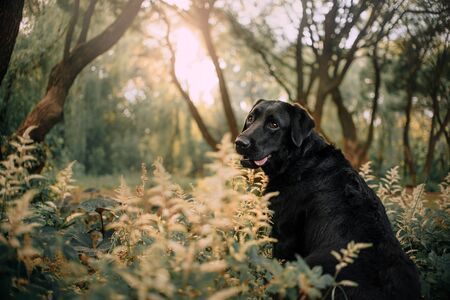1. Understanding Your Dog’s Coat and Skin Type
Before deciding how often to bathe your dog, it’s essential to understand their coat and skin type. Different breeds have unique grooming needs, and overbathing or underbathing can lead to skin issues. Let’s take a closer look at how coat types influence bathing frequency.
Coat Types and Their Bathing Needs
Dogs come with various coat types, each requiring different levels of care. Here’s a general guideline for different coat types:
| Coat Type | Description | Recommended Bathing Frequency |
|---|---|---|
| Short-haired | Smooth, sleek coats that don’t trap much dirt or oil. | Once every 4-6 weeks |
| Double-coated | A dense undercoat with a protective topcoat, common in breeds like Huskies. | Once every 6-8 weeks (avoid frequent bathing as it strips natural oils) |
| Curly or Wavy | Poodles and similar breeds have curly coats that can trap dirt. | Every 3-4 weeks (to prevent matting and maintain cleanliness) |
| Hairless | No fur to absorb oils; requires special skincare. | Once a week (to prevent skin dryness or irritation) |
The Role of Your Dog’s Skin Condition
Your dog’s skin health also plays a significant role in determining bath frequency. Dogs with sensitive or dry skin should be bathed less frequently, using gentle shampoos designed for sensitive skin. On the other hand, dogs prone to oily skin may need more frequent baths to keep their coat fresh.
Avoid Overbathing
Bathing too often can strip away essential oils from your dog’s coat, leading to dryness and irritation. Always use a mild, dog-friendly shampoo and ensure thorough rinsing to prevent residue buildup.
A Quick Tip:
If your dog gets dirty between baths, consider using pet wipes or dry shampoo as an alternative to frequent washing.
2. Factors That Determine Bathing Frequency
How often you should bathe your dog depends on several factors. While some dogs can go weeks without a bath, others may need more frequent washing to stay clean and healthy. Let’s explore the key elements that influence your pup’s bathing schedule.
Activity Level
Dogs with high energy levels and outdoor lifestyles tend to get dirtier faster. If your dog loves rolling in the mud, swimming, or running through fields, they’ll likely need more frequent baths compared to a more sedentary pup who spends most of their time indoors.
Environment
Your dogs surroundings play a major role in determining how often they should be bathed. Dogs living in urban areas might pick up pollutants from the streets, while rural dogs may gather dust, pollen, or even manure. If your dog frequently encounters dirt, allergens, or chemicals in their environment, consider adjusting their bath schedule accordingly.
Allergies and Skin Conditions
Some dogs suffer from skin allergies or conditions that require regular baths with medicated shampoos. If your vet has recommended a special bathing routine for your pup due to allergies, dry skin, or infections, its crucial to follow their advice to maintain your dog’s skin health.
Coat Type and Breed
Different coat types have different bathing needs. Heres a quick guide:
| Coat Type | Recommended Bathing Frequency |
|---|---|
| Short-haired breeds (e.g., Beagle) | Every 1-2 months |
| Long-haired breeds (e.g., Golden Retriever) | Every 4-6 weeks |
| Double-coated breeds (e.g., Husky) | Every 6-12 weeks |
| Dogs with skin conditions | As advised by a vet |
| Hairless breeds (e.g., Xoloitzcuintli) | Weekly |
Your Dogs Natural Oils
Bathing too frequently can strip away essential oils from your dog’s skin, leading to dryness and irritation. Some breeds naturally produce more oils than others, so finding the right balance is important to keep their coat healthy.
Your Lifestyle and Preferences
If your dog sleeps in bed with you or interacts closely with family members daily, you might prefer more frequent baths to maintain hygiene. However, using wipes or dry shampoos between baths can help keep them fresh without overwashing.
By considering these factors, you can determine the best bathing schedule for your furry friend while keeping their coat and skin healthy.

3. Best Practices for Bathing Your Dog
Giving your dog a bath doesn’t have to be a messy or stressful experience. With the right approach, you can make bath time an enjoyable bonding moment for both you and your pup. Follow these best practices to ensure a smooth and effective bath.
Choosing the Right Shampoo
Not all shampoos are created equal, and using the wrong one can irritate your dogs skin. Here’s how to choose the best shampoo for your furry friend:
| Dog Type | Recommended Shampoo |
|---|---|
| Sensitive Skin | Hypoallergenic or oatmeal-based shampoo |
| Dry or Itchy Skin | Moisturizing shampoo with aloe vera or coconut oil |
| Oily Coat | Degreasing shampoo with natural cleansers |
| Puppies | Mild, tear-free puppy shampoo |
| Fleas & Ticks | Vet-approved flea and tick shampoo |
Selecting the Right Water Temperature
The water should be lukewarm—too hot can burn your dog’s skin, while too cold can make them uncomfortable. A good rule of thumb is to test the water with your wrist; if it feels comfortable to you, it should be fine for your pup.
Step-by-Step Bathing Process
- Brush Before Bathing: Remove loose fur and tangles to prevent matting.
- Prepare Everything in Advance: Have towels, shampoo, and a cup or sprayer ready.
- Wet Your Dog Thoroughly: Use a gentle stream of water to soak their coat completely.
- Lather Up: Apply shampoo and massage it into their fur, avoiding the eyes and ears.
- Rinse Well: Make sure no residue is left behind, as leftover shampoo can cause irritation.
- Towel Dry First: Use an absorbent towel to remove excess water.
- Use a Blow Dryer (if needed): Set it on low heat and keep it at a safe distance.
Post-Bath Care: Keeping Your Dog Comfortable
- Brush Again: Once dry, brush their coat to prevent tangles.
- Praise & Reward: Give treats and praise so they associate baths with positive experiences.
- Avoid Immediate Outdoor Play: Let them fully dry before heading outside to prevent dirt from sticking to damp fur.
By following these simple steps, you can turn bath time into an enjoyable routine that keeps your dog clean, healthy, and happy!
4. Signs You’re Bathing Too Much or Too Little
Finding the right bathing schedule for your dog is essential for their health and comfort. Bathing too often can strip their skin of natural oils, while not bathing enough can lead to dirt buildup and odor. Here are some signs that indicate you may need to adjust your dogs bath routine.
Signs of Over-Bathing
Bathing your dog too frequently can cause skin irritation and dryness. If you notice any of these symptoms, you might be over-bathing:
- Dry, flaky skin: Frequent washing removes natural oils, leading to itchy, irritated skin.
- Excessive scratching: If your dog is constantly scratching after baths, their skin may be too dry.
- Dull coat: A lack of natural oils can make the fur look brittle or lackluster.
- Increased shedding: Over-bathing can weaken hair follicles, causing more fur loss than usual.
Signs of Under-Bathing
If youre not bathing your dog often enough, you may start noticing these issues:
- Strong odor: A persistent bad smell can indicate a buildup of dirt and bacteria.
- Greasy or sticky fur: Oils accumulate on the coat, making it feel unclean.
- Dandruff or flaky skin: While this can also be a sign of over-bathing, it may mean your dogs skin isnt getting enough moisture from occasional baths.
- Irritated or inflamed skin: Dirt and bacteria buildup can cause redness and discomfort.
Finding the Right Balance
The ideal bathing frequency depends on factors like breed, activity level, and coat type. Here’s a general guideline to help you determine how often to bathe your dog:
| Dog Type | Recommended Bathing Frequency |
|---|---|
| Short-haired breeds (e.g., Beagle, Boxer) | Once every 4-6 weeks |
| Long-haired breeds (e.g., Golden Retriever, Shih Tzu) | Once every 3-4 weeks |
| Dogs with oily coats (e.g., Basset Hound) | Once every 2-4 weeks |
| Dogs with sensitive skin (e.g., Bulldog) | Avoid frequent baths; consult a vet for recommendations |
| Highly active outdoor dogs | Bathe as needed based on dirt and odor levels |
Adjusting Your Dog’s Bathing Routine
If you recognize any signs of over-bathing or under-bathing in your pet, try adjusting their bath schedule gradually. Use mild, dog-friendly shampoos that preserve natural oils and consult your vet if you notice ongoing skin issues. Finding the right balance will keep your pup clean without compromising their skin health.
5. Alternatives to Full Baths
Sometimes, giving your dog a full bath isnt practical or necessary. Fortunately, there are several ways to keep your pup fresh and clean between baths. Using dry shampoo, pet wipes, and proper brushing techniques can help maintain their hygiene without the need for frequent water baths.
Dry Shampoo for Dogs
Dry shampoo is a great option for keeping your dog’s coat clean without using water. It helps absorb excess oils and odors while refreshing their fur. To use dry shampoo:
- Choose a dog-friendly dry shampoo (avoid human products).
- Apply a small amount to your dog’s coat.
- Massage it in gently with your hands.
- Brush out any excess product to remove dirt and debris.
Using Pet Wipes
Pet wipes are convenient for quick touch-ups, especially after outdoor walks or playtime. They are gentle on the skin and help remove dirt, allergens, and minor odors. Use them to wipe:
- Paws after walks
- The face and ears (avoid getting too close to the eyes)
- The belly and undercoat areas
The Importance of Regular Brushing
Brushing is one of the easiest ways to keep your dog clean between baths. It helps remove loose fur, dirt, and dander while distributing natural oils that keep their coat healthy. Below is a guide to brushing frequency based on coat type:
| Coat Type | Brushing Frequency |
|---|---|
| Short-haired breeds (e.g., Beagle, Boxer) | Once or twice a week |
| Medium-haired breeds (e.g., Golden Retriever, Cocker Spaniel) | A few times a week |
| Long-haired breeds (e.g., Shih Tzu, Afghan Hound) | Daily |
| Dogs that shed heavily (e.g., Husky, German Shepherd) | Daily during shedding season |
Paw Care Between Baths
Your dogs paws can collect dirt and bacteria, so regular cleaning is essential. You can:
- Dip paws in lukewarm water and pat dry.
- Use pet-safe wipes to remove dirt.
- Trim paw hair to prevent matting.
When to Opt for a Full Bath Instead
If your dog starts smelling bad despite these alternatives or has visible dirt buildup, its time for a full bath. Always pay attention to their skin condition—if you notice irritation or excessive oiliness, consult your vet about the best bathing schedule.


